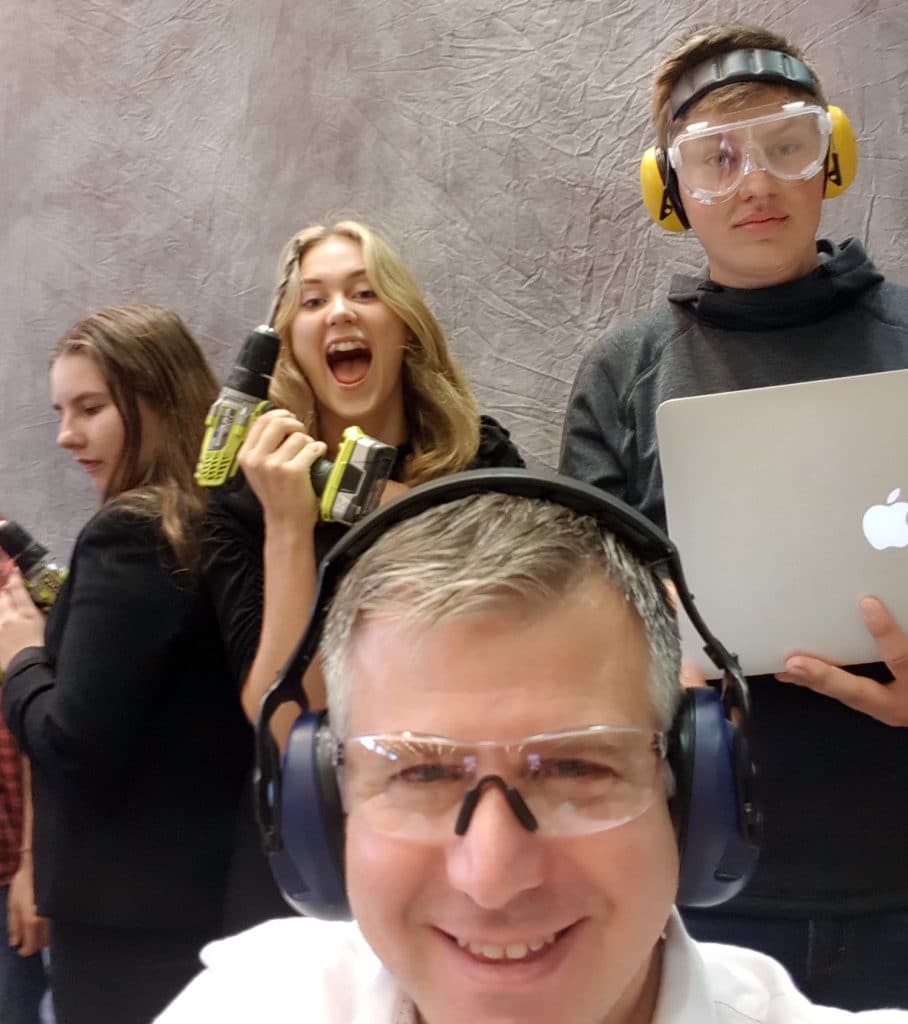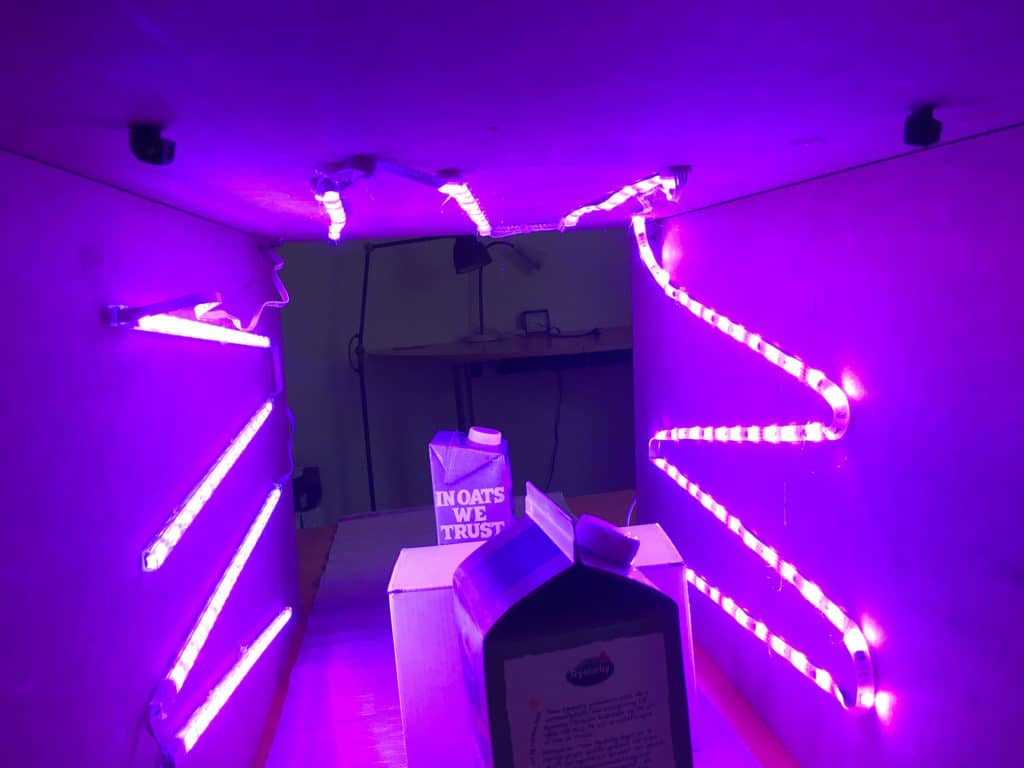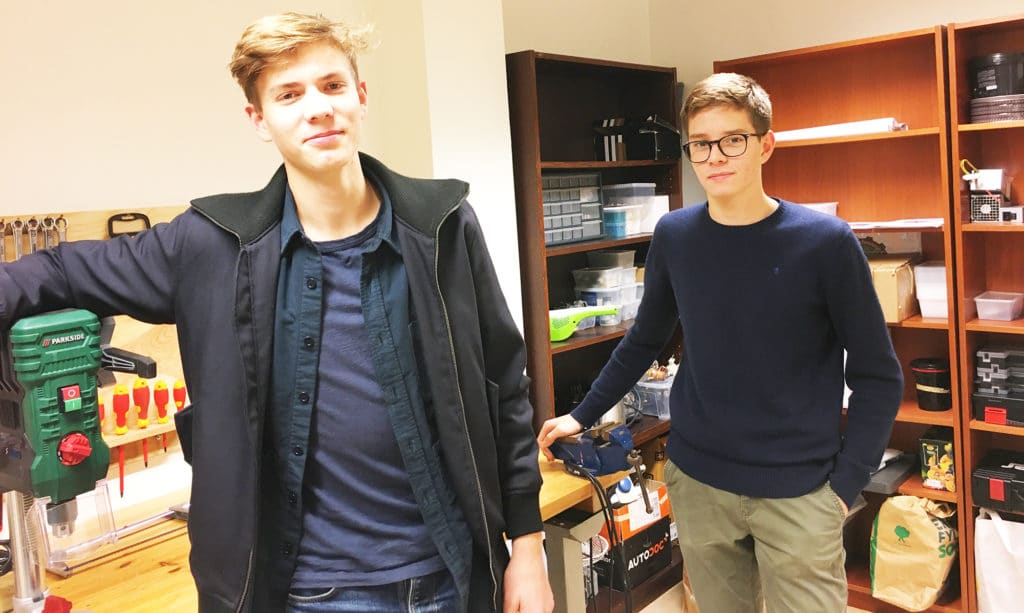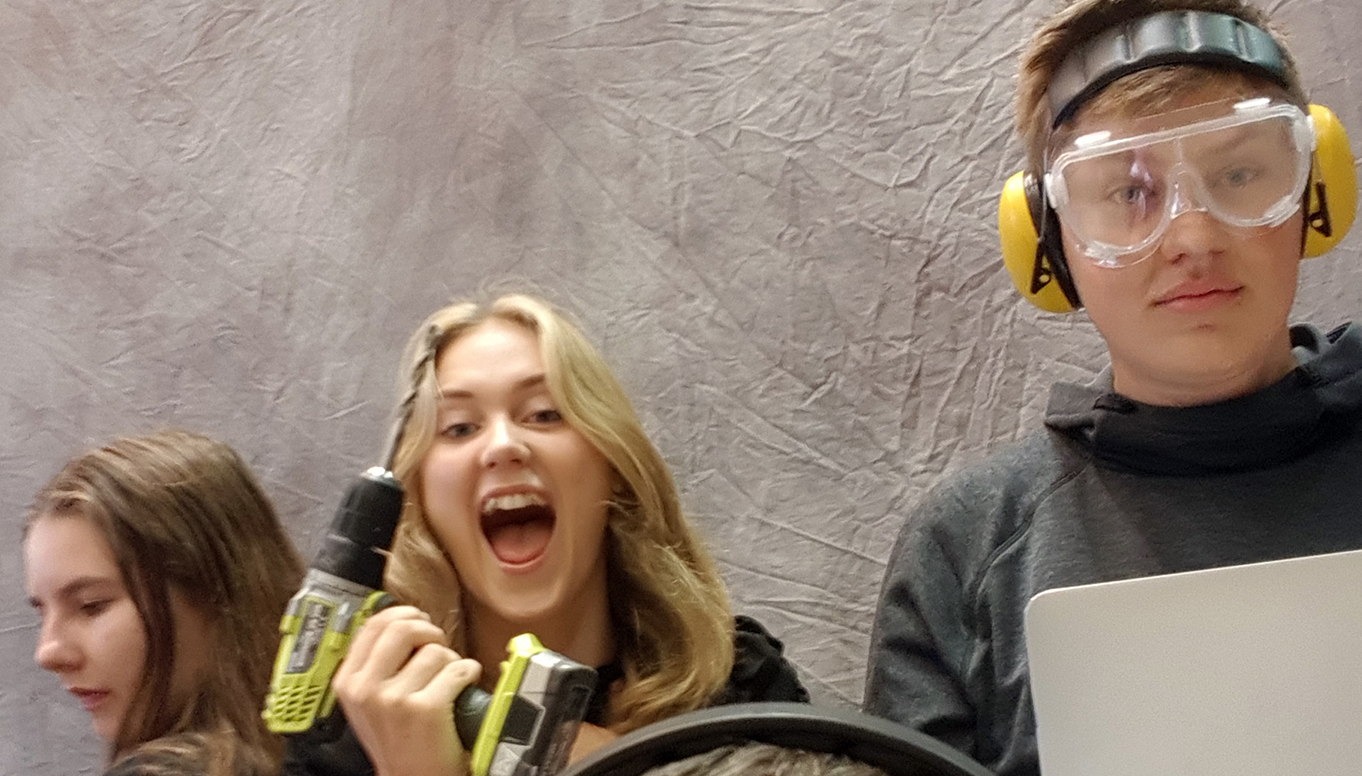Published 6 November 2020
The many exciting projects in SSHL Design and Technology Group
It started as an informal after-school activity with a small group of technology interested students.
With the support of one adult staff member, it soon developed into a formal long-term sustainable school initiative; the SSHL Design and Technology Group.
In the Design and Technology Group, DTG, students raise their awareness about the possibilities with a sustainable technology approach. The initiative has shown ways that technological waste can be utilized for new technology, and how technology can be designed to solve new problems while also protecting the environment.
The group now has a Board made up of students from many different programs and age groups. The initiative is promoted both locally and abroad.

Having fun and learning at the same time, in the workshop.
Georgios Savvas, the students’ mentor and house tutor:
– This is a service driven extra-curricular initiative that creates opportunities for students and staff to apply their classroom learning to solve real world problems, in collaboration with organizations outside of the school.
Mr Savvas also thinks that the DTG initiative empowers the next generation to think about needed technology in new ways and make decisions that also protect the global environment.
The initiative has faced several challenges, where two stand out:
50 broken laptops turned into 30 fully functional laptops
The group collaborated with a local school to receive 50 broken laptops, destined for the waste. The students refurbished and ended up with 30 fully functional laptops.
The intention with the laptops was to donate them to a school in Kenya – but the school did not have power to charge the laptops, nor did they have internet access. Instead the students donated the laptops to the local educational community and set out to find a long term solution for the school in Kenya through learning how to elicit donations of sustainability technology.
Not only did the team succeed in securing solar panels for the Kenyan school, they also secured a sponsor for satellite internet. The technology was recently installed and the group has now created a long term plan to build and send refurbished educational technology to the school.
UV-sanitation system that disinfects groceries
This project was initiated in order to support the local community in the Covid-19 response. The students designed and built a UV-sanitation system that disinfects groceries at the cashier station. A local grocery store agreed to test the unit for long-term use but could only do so if the unit was under patent. The group, therefore, put together and submitted a patent application to ensure that the unit can get on the market as quickly as possible. The students will now be working on pandemic solutions long term.

In the Covid-19 response, the students designed and built a UV-sanitation system that disinfects groceries at the cashier station.
Matteo Villa DP22, who lives in Backa boarding house, has been a member of DTG since he arrived at the school. He became interested because of previous projects, for instance the 3D printer. Matteo is going into an Engineering track for his future academics. He studies HL Maths and HL Physics and thought that working with the DTG would give him valuable experience.
What are you working on right now?
– We are building a seed drone and getting a Net Zero house to campus. I am very excited to see the drone fly for the first time, Matteo says.
In the drone project, the group is building a semi-autonomous drone. The goal is for the drone to deliver seeds in a remote location in either Kenya or Nigeria to help regrow areas that have been damaged by deforestation. The drone is largely being built with parts from technology that has been discarded.
Elias Sevdas DP22, who lives in Midgården boarding house, studies High Level Maths and Physics and felt that DTG was a nice complement to his studies. He wants to assure everyone that DTG is not only for students from these subjects but that everyone can participate.
What do you like most about DTG?
– I am really motivated by the use of waste in solving technological questions. My aim is to help the world with “absolute waste reduction”, Elias says.

Matteo and Elias are often in the workshop. DTG welcomes students from all programmes and at all ages.
Elias and the group are also working on a prototype of a Net Zero house on campus, which they aim to convert into the Net Zero goal house. Both Matteo and Elias are excited about getting the building onto campus and doing the technological design work needed for this structure.
Anyone can join
The DTG has members from all backgrounds, with the youngest from Year 8 in the Swedish Grundskola. No experience with technology is needed to join DTG, who welcomes students from all programs and at all ages. The group meets twice a week in their workshop in the basement of one of the boarding houses.
The goal is to promote sustainable technology changes to safeguard both the local and global environment.

